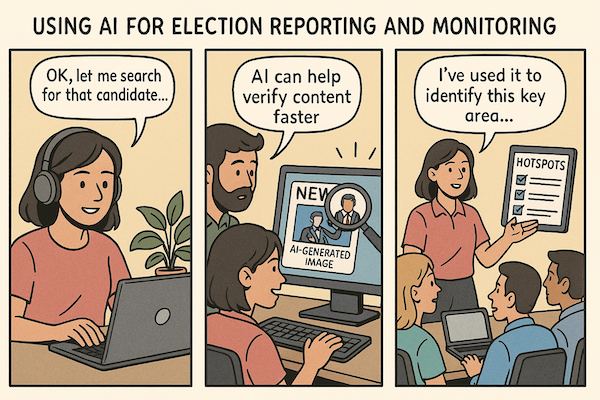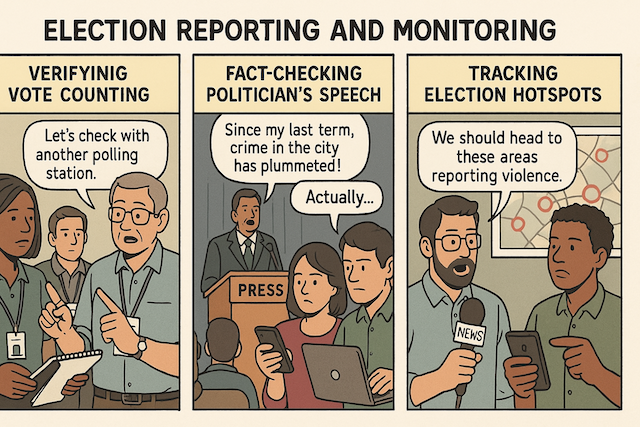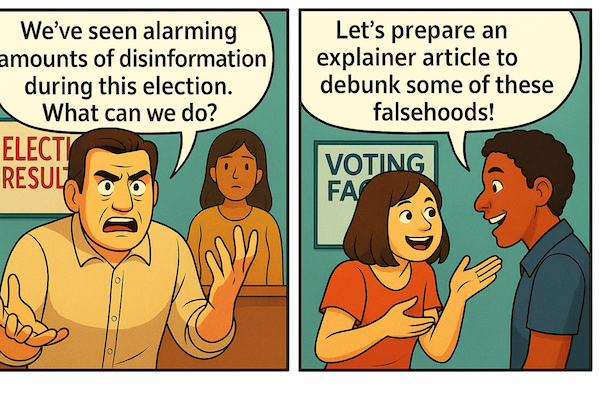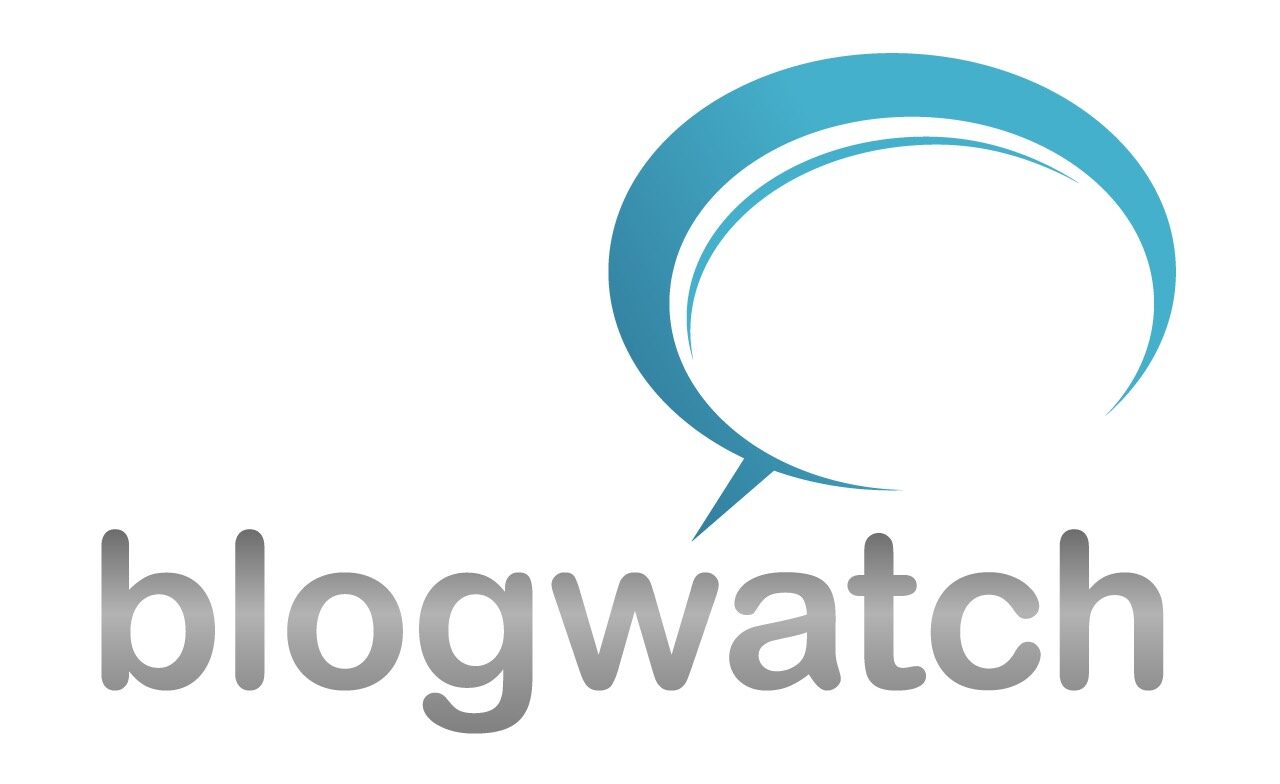Using AI for election reporting and monitoring

With the 2025 national elections just around the corner, journalists, civic advocates, and data professionals came together for a timely training on how artificial intelligence (AI) can help strengthen election reporting and monitoring. Organized by Rappler, the session focused on giving participants hands-on experience with tools to verify information, spot and counter misinformation, and dig deeper into election-related data.
This year’s elections carry added weight. With 68.4 million registered voters—many of them from Gen Z and millennial generations—the outcome could shape the country’s direction for years. The training also underscored the larger backdrop: rising living costs, transport issues, and legal cases involving top political figures. These overlapping challenges make the 2025 elections a critical moment for the Philippines, and the role of the media in upholding credible information has never been more urgent.
LISTEN:AI Tools for Election Reporting in the Filipino language.
The session highlighted the vital role of journalists and civil society in protecting the integrity of information, particularly in a digital environment where disinformation spreads quickly through technology. Leading the core workshop was Aidila Razak, a veteran digital journalist and former special reports editor at Malaysiakini. With 16 years of newsroom experience, Razak shared how journalists can integrate AI-powered tools into their workflow to fight misinformation and support evidence-based reporting.
Razak began by introducing Google Trends, which tracks real-time search interest on topics and political candidates. While powerful for gauging public sentiment, Razak reminded participants that Trends doesn’t differentiate between organic searches and manipulated activity—making editorial discretion essential.
She then demonstrated how tools like Google’s reverse image search and Google Lens can verify visuals and detect AI-generated images through embedded watermarks. It was emphasized of the growing importance of these tools as synthetic media becomes more widespread in political discourse.

Participants also learned how to use Google Maps and Street View to geolocate viral content and assess its authenticity. Razak walked through a case involving a misleading video posted by a Malaysian politician and showed how simple online sleuthing confirmed the real context.
The session also covered Google Fact Check Explorer—a tool aggregating fact checks from across the globe. Participants tested its use in real-time by examining a resurfaced tweet linked to Virginia Giuffre. Through keyword searches, they found that the tweet was authentic and had already been verified by fact-checking site Snopes, illustrating the tool’s value in speeding up verification work.
Two deeper research tools such as Google Pinpoint and NotebookLM were introduced. Google Pinpoint, designed for journalists, was highlighted as a powerful transcription and document analysis tool. It allows users to upload long interviews, speeches, or scanned documents and get accurate transcripts in minutes. Razak demonstrated how it correctly transcribed a one-and-a-half-hour presidential address and could even identify and process text embedded in images—including handwriting and blurry signboards. Another highlight was Pinpoint’s ability to extract structured data from multiple pages. This functionality can be especially useful during elections when journalists need to analyze asset declarations, candidate profiles, or other document-heavy datasets quickly.
NotebookLM, on the other hand, was presented as a virtual research notebook powered by generative AI. It enables users to compile trusted sources such as government documents, articles, or reports and ask targeted questions. Unlike traditional chatbots, NotebookLM restricts its responses to the user’s uploaded materials, making it more reliable for sourcing and content creation. Users can also generate summaries, create content drafts, and organize table information.
Both Pinpoint and NotebookLM are free to use, with Pinpoint requiring journalists or researchers to request access. Razak encouraged participants to explore both tools and highlighted that while AI can significantly streamline workflows, human editorial judgment remains critical in ensuring credibility and accuracy.
As the 2025 elections near, the session underscored a central message: AI is not a replacement for journalistic rigor but a valuable companion in producing fast, accurate, and responsible election coverage. The tools are available. The challenge—and the responsibility—now lies in using them well.

